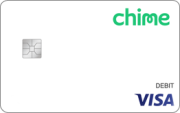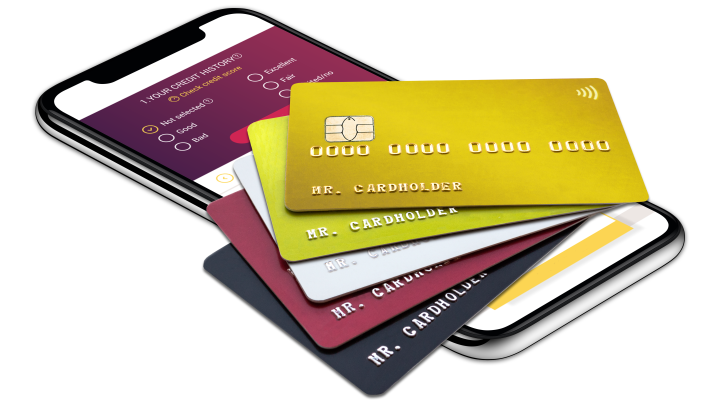The content on this page is accurate as of the posting date; however, some of the offers mentioned may have expired.

Bank accounts are safe and useful tools to manage your finances. There are different types of bank accounts that serve different needs and can help you save and keep track of your spending, and some of them will even pay you interest. You can open a bank account either online or at a bank or credit union branch. Generally, you will be asked to fill out an application, verify your identity and provide any other information the financial institution needs to open an account.
Most banks and credit unions offer the following account types:
- Savings accounts.
- Checking accounts.
- Money market accounts (MMAs).
- Certificates of deposit (CDs).
Choosing the right type of account allows you to maximize the return from your savings, minimize fees, and manage your money conveniently. There are four main options you'll come across, and each of them is discussed in detail below.
Checking account basics
A checking account is generally the most basic option you can choose for everyday spending. With a checking account, like the Chime® Checking Account, you can make purchases using a debit card, pay bills online or with paper checks, and transfer funds to or from linked accounts.
Checking accounts are necessary for most people, so there are multiple checking account options designed to fit a variety of needs, including traditional, kids or teen checking, senior, interest, rewards, business checking accounts and more. You can reliably find high-yield checking accounts that offer APYs over 4%.
Checking accounts are necessary for most people, so there are multiple checking account options designed to fit a variety of needs, including traditional, kids or teen checking, senior, interest, rewards, business checking accounts and more.
Standard checking accounts may come with a monthly maintenance fee or have minimum balance requirements you need to meet to avoid fees. However, unlike other bank accounts, there is usually no limit on the number of withdrawals you can make from a checking account per month.
Depending on the financial institution, checking accounts typically have deposit insurance provided by the Federal Deposit Insurance Corporation (FDIC) or the National Credit Union Administration (NCUA). Insured accounts are covered for up to $250,000 in the event of bank failure.
Some key features of a checking account:
- Designed for everyday spending and paying bills.
- Comes with a debit card and the ability to write checks.
- Does not have limits on deposits or withdrawals.
- Has low interest rates and does not earn much interest on the money you keep in the account.
- Some checking accounts have monthly maintenance fees, ATM fees, overdraft fees, or other charges.
Savings account basics
A savings account is a deposit account designed to keep money that you don't plan to spend immediately. The money you keep in a savings account earns interest over time based on the annual percentage yield (APY). Rates vary from one savings account to another, with the best rates on high-yield savings accounts reaching as high as 6.17% APY. The Customers Bank High-Yield Savings Account, the CIT Bank Platinum Savings, or High-Yield Savings Account from CloudBank 24/7 are just some of the options that offer up to 5.00% APY or more.
Most savings accounts don't include a debit card or check-writing opportunities. You can withdraw funds from savings accounts at any time. However, withdrawals may be capped at no more than six per month, but it will depend on the financial institution. Similarly, savings accounts usually have minimum balance requirements as an incentive to avoid spending the funds.
Savings accounts at banks and credit unions are federally insured up to $250,000 per depositor, and many nonbank providers partner with banks to offer insurance as well.
Some key features of a savings account:
- Designed for saving and growing your money.
- Earns interest over time.
- Allows deposits and withdrawals. However, there are usually limits on the number of withdrawals you can make each month without paying fees.
- May offer extra features like budgeting tools, mobile banking, or linked checking accounts.
- Usually has a monthly service fee of around $5 or less.
- Requires a minimum balance to avoid fees or earn higher interest rates.
Money market deposit account basics
A money market account (MMA) combines the features of both savings and checking accounts. They typically offer higher interest rates than traditional savings accounts while providing easy access to your funds. For example, the SkyOne Federal Credit Union high-yield money market deposit account or the Patriot Bank Money Market Deposit Account have a very competitive yield.
Interest rates for money market accounts are usually variable, which means they are subject to change in line with market rates. Often, money market accounts have a tiered rate structure, so your interest rate depends on the account balance. Therefore, it can be beneficial to maintain a large enough balance to get the best possible interest rate.
MMAs may have debit card and check-writing privileges. However, you're typically limited to six purchases or transfers you can make each month. ATM withdrawals are usually not capped, though.
Like other deposit accounts, money market accounts are insured by the FDIC or NCUA, up to $250,000 per account.
Some key features of a money market account:
- Mix between checking and savings accounts.
- Allows for occasional access to funds.
- Useful for short- or long-term needs.
- May earn higher interest rates than standard savings accounts.
- Offers check-writing and debit cards.
- Typically requires a higher minimum balance than regular savings accounts.
- Limits the number of withdrawals you can make to six per month.
Certificates of deposit basics
Certificates of deposit (CDs) are best for funds that can be put away for a specific period, called a term, which can typically range from a few months to five years or more. CD interest rates can be fixed or variable, depending on the type of CD. Fixed-rate CDs have an interest rate that is set for the entire term, while variable-rate CDs interest may change over time based on market conditions or other factors.
When your CD is nearing maturity, you have several options. Many financial institutions offer automatic renewal, meaning your CD will roll over into a new term with an updated interest rate. If you withdraw funds from your CD before the maturity date, it could result in penalties and fees. These can include a loss of interest or even a portion of your principal. You also have a grace period of 7 to 10 days to withdraw your funds or make changes to your CD without incurring penalties.
CDs are considered a low-risk investment because they offer a guaranteed return on investment and are insured by the Federal Deposit Insurance Corporation (FDIC) or National Credit Union Administration (NCUA). CDs offered by FDIC-insured banks or NCUA-insured credit unions are protected up to $250,000 per depositor, ensuring the safety of your funds.
The 5-Month High-Yield CD from Quontic Bank, the 10-Month Certificate from GreenState as well as the Valley Direct CDs are among the top deals from our partners.
Some key features of a certificate of deposit:
- Low-risk savings option (guaranteed return on investment).
- Your funds are locked in for the term length.
- Penalties for withdrawals before the maturity date.
- Offers automatic term renewal.
Conclusion
Bank accounts serve different purposes, depending on your personal financial goals. Checking accounts are best used for everyday expenses, while savings accounts serve your savings goals. CDs are good for funds you do not plan to use for a while.
When choosing the most suitable account for you, always keep in mind that you can have more than one bank account and always add or remove them as your financial situation changes.




